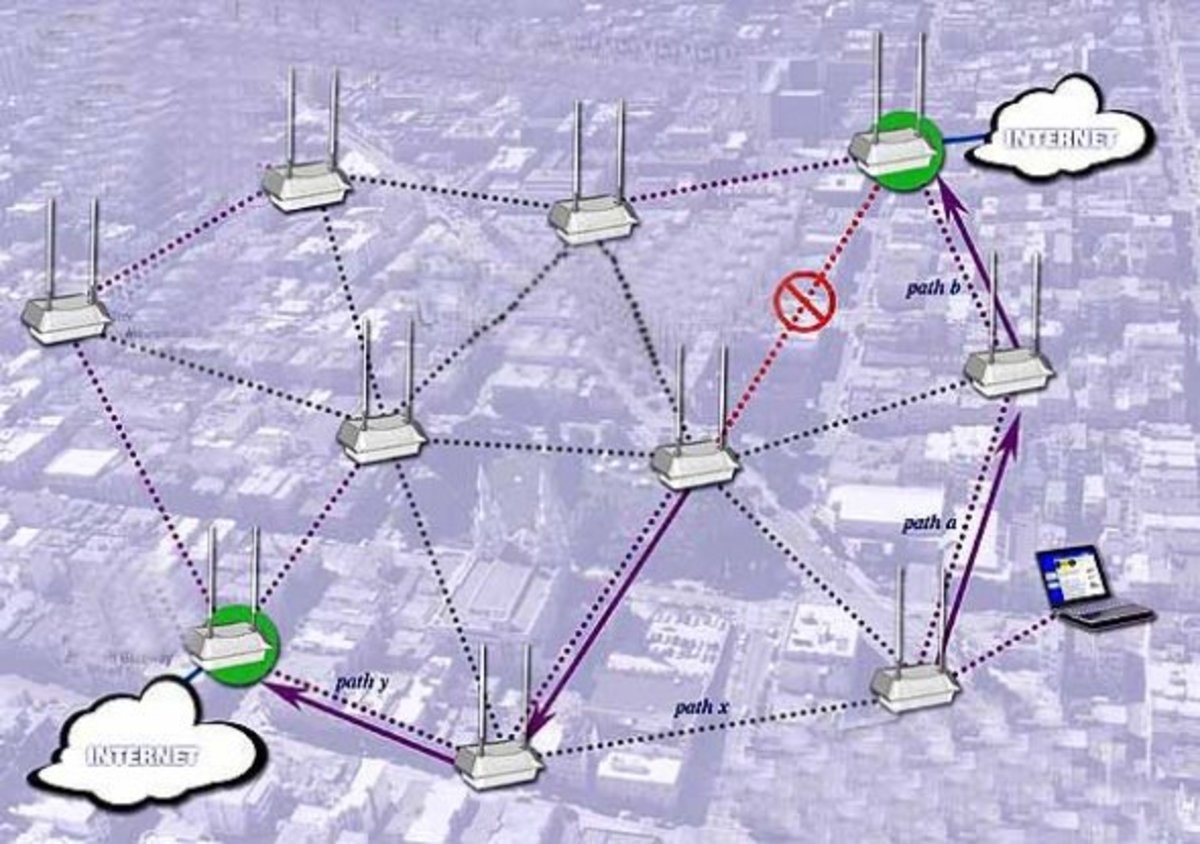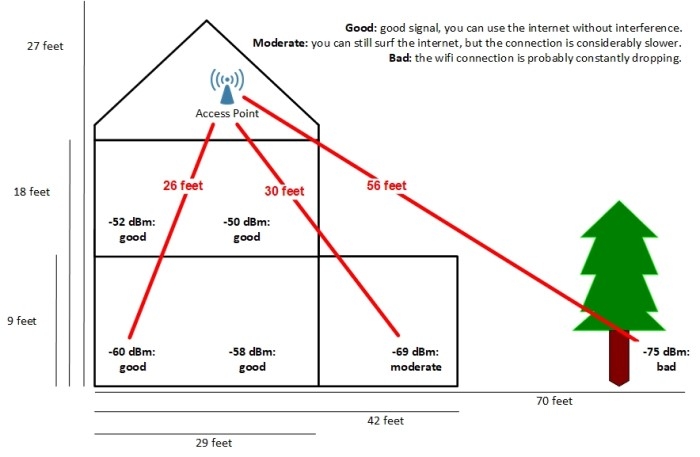How Do I Get WiFi In A Large Area?
Getting WiFi in a large area can be a daunting task. There are a few things to consider such as the size of the area, the number of users that will be accessing the network, and the type of WiFi technology you need. The first step is to determine the range of the desired WiFi coverage. This can be done by measuring the physical size of the area, taking into account any obstructions such as walls and furniture. Once you have the range, you can decide on the type of WiFi technology that will be best suited for your needs. The most common technologies are 802.11a/b/g/n/ac, which provide different ranges and speeds. You will also need to purchase the appropriate hardware such as routers, access points, and/or repeaters in order to extend the coverage of the network. Finally, you will need to configure the network appropriately in order to ensure that it is secure and can provide the desired speeds and coverage. With the proper planning and implementation, you can easily get WiFi in a large area.
Understanding Your Existing Network
Having reliable and fast WiFi in a large area is an important part of any business. Knowing how to set up WiFi in a large area can be daunting, but it doesn’t have to be. The first step in setting up a WiFi network in a large area is to understand your existing network.
When setting up a WiFi network, it’s important to know your current network setup. You need to know the type of equipment you have, the number of access points, and the type of encryption you are using. Additionally, you need to understand the layout of your building and the type of environment in which you are operating. This will allow you to determine the best placement of access points for optimal coverage, as well as the best type of encryption for your setup.
Having a complete understanding of your existing network setup is vital to ensuring that your WiFi network runs smoothly. Understanding your existing network setup will also help you determine if you need additional equipment such as mesh networks or repeaters. Additionally, understanding your existing network setup will help you better plan for the future as your WiFi needs change.
Identifying Your Area’s Needs
When it comes to getting WiFi in a large area, it’s important to take the time to consider the size of the area, as well as the potential for interference. You’ll also need to consider the type of devices that will be accessing the network. Knowing the types of devices that are likely to be using the network, as well as the estimated number of users, will help you choose the best type of WiFi technology for your needs. You should also consider the type of environment in which the network will be used, such as an outdoor area or a building with multiple floors. Additionally, it is important to consider the type of security measures that will be needed, as well as any potential regulations that may be applicable. Taking the time to properly assess your area’s needs is essential in order to ensure that you are selecting the best WiFi technology for your particular situation.
Finding the Right Solutions
Getting WiFi in a large area can be a tricky task. Fortunately, there are several solutions available that can help you cover a large area with WiFi without breaking the bank. Before selecting a solution, it is important to understand the size of the area that needs to be covered and the type of internet connection that is available in the area.
Depending on the size of the area, there are several options to consider. For small to medium-sized areas, a wireless router with an antenna can be used to extend the range of the existing internet connection. Additionally, WiFi mesh networks can be installed to cover larger areas. Mesh networks are made up of multiple wireless access points that are connected together, allowing for seamless coverage in a large area.
For large areas, such as an entire building, a more powerful solution is needed. For these situations, an enterprise-grade wireless system can be used. These systems use specialized hardware and software to provide secure and reliable WiFi coverage in a large area.
When deciding on the best solution for a large area, it is important to consider your budget, the type of internet connection available, and the size of the area that needs to be covered. With the right information, finding the solution that meets your needs can be much easier.

Network Installation
The key to providing reliable WiFi to a large area is ensuring a robust network installation. The installation must be done correctly to ensure a strong signal and a secure connection. To achieve this, the right equipment must be chosen and the network must be configured in the optimal way. A professional network installation should include the setup of a powerful router, an access point, and a range extender. The router is the central hub of the network and provides the core processing power for the connection. The access point amplifies the signal and allows it to cover a bigger area. The range extender then ensures that the signal is powerful enough to reach even the most remote corners of the large area. Professional network installation services can help you ensure that your wifi connection is secure, stable, and powerful.
Troubleshooting Common Problems
It can be difficult to ensure reliable WiFi coverage in large areas, and the most common issues can be hard to diagnose. To ensure stable WiFi reception in large areas, it’s important to understand the common problems that might arise. These can include signal interference, inadequate network infrastructure, improper placement of access points, and incorrect configuration.
Signal interference is the most common issue, and can be caused by physical obstructions, other wireless networks, and certain appliances in the area. To identify and resolve signal interference issues, use a WiFi analyzer to identify the sources of interference and take steps to reduce or eliminate them.
Inadequate network infrastructure is also an issue, and can be caused by outdated routers, mismatched access points, or lack of coverage area. To ensure that the network infrastructure is adequate for the area, it’s important to use the right equipment and configure it correctly.
Improper placement of access points is another common issue, and can cause poor coverage and low signal strength. To ensure good coverage in a large area, it’s important to place access points in the right locations. This includes high points, such as walls and ceilings, that will allow the access points to broadcast the signal more efficiently.
Finally, incorrect configuration can also be a problem. To ensure that the network is configured correctly, use a network management tool to check the settings and make sure they are correct.
Overall, to ensure reliable WiFi coverage in large areas, it’s important to understand the common problems that might arise. By addressing signal interference, inadequate network infrastructure, improper placement of access points, and incorrect configuration, it is possible to ensure a stable WiFi connection in a large area.
Optimizing Your WiFi Network
For Large Areas
For those who need to get a WiFi network up and running in a large area, it can be a daunting task to figure out how to ensure the best coverage. Fortunately, there are a few simple steps to take that can significantly improve your WiFi network’s performance in larger areas. First, it is important to consider the type of router and antenna you are using. The more powerful the router and antenna, the better the signal will be. Additionally, it is important to place the router in an area where there are few obstacles that can block the signal. This will allow the router to broadcast the signal more effectively. Additionally, consider using multiple routers or access points. This will allow the network to cover a larger area and will also help reduce signal interference. It is also important to keep the network secure by using strong passwords and encryption protocols. Lastly, you may want to consider using a mesh WiFi system, which is designed to provide coverage over a large area. By following these simple steps, you can ensure your WiFi network is optimized for large areas and provide the best coverage possible.
FAQs About the How Do I Get WiFi In A Large Area?
Q1: What type of equipment do I need to get WiFi in a large area?
A1: To get WiFi in a large area, you will need a wireless router, access points, and an antenna that can extend the range of the signal.
Q2: How can I ensure my WiFi signal is strong in a large area?
A2: To ensure your WiFi signal is strong in a large area, you should place your access points in strategic locations to maximize the coverage area. Additionally, you should invest in a high-quality antenna that can extend the range of the signal.
Q3: Is it possible to set up a WiFi network in a large area without a professional?
A3: Yes, it is possible to set up a WiFi network in a large area without a professional. However, you may need to consult with an IT professional to ensure you have the right equipment and that your network is properly configured for maximum coverage.
Conclusion
In conclusion, setting up WiFi in a large area can be challenging but it is doable if you have the right equipment and setup. Choosing the right type of router, access point, and antenna is essential for effective and reliable coverage. Additionally, it is important to consider the number of users who will be accessing the WiFi and their needs in order to ensure that the network can handle the traffic. With the right setup and equipment, it is possible to get WiFi in a large area.




